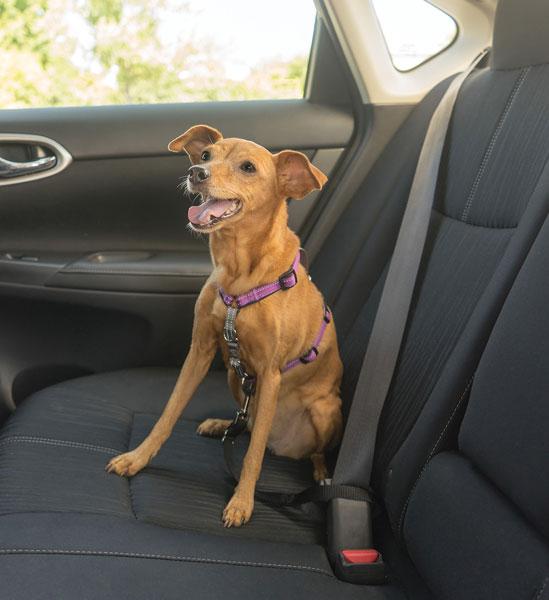Planning and preparation are the keys to safe travel with your cat or dog. Research beforehand to make sure that pets are allowed at en route and destination hotels and that your pet does not fall outside the breed or size restrictions. Also make a list of boarding facilities and emergency veterinarians along the way and at your destination.
 Be sure your pet is healthy before taking him on a trip. Have a thorough veterinary checkup about a month before your departure date in case anything unexpected arises (such as a reaction to a vaccine or medication) so you have time to take care of it. Check to see that his vaccines are current or if he needs other vaccines or products to protect him from any parasites or illnesses along your route or at your destination. Many states as well as foreign countries require a health certificate issued within 10 days of your departure, so your pet may have to have a return visit. Also ask your vet to provide you with a copy of your pet's medical records in case there is an emergency on your trip.
Be sure your pet is healthy before taking him on a trip. Have a thorough veterinary checkup about a month before your departure date in case anything unexpected arises (such as a reaction to a vaccine or medication) so you have time to take care of it. Check to see that his vaccines are current or if he needs other vaccines or products to protect him from any parasites or illnesses along your route or at your destination. Many states as well as foreign countries require a health certificate issued within 10 days of your departure, so your pet may have to have a return visit. Also ask your vet to provide you with a copy of your pet's medical records in case there is an emergency on your trip.
While you are at the vet, have a microchip implanted. Your pet should wear his permanent ID tag as well as a temporary tag which has your name, temporary address, and your cell phone number and/or email address along with the phone number of where you will be staying at your destination.
Acclimate him to his crate or carrier in advance of your departure. If the only time he's ever been in a crate is when you take him to the vet, he may not have a good association with the crate, which may cause both him and you additional stress.
Prepare a travel kit including his regular food (because it may not be available), travel food and water bowls, a sturdy leash and well-fitting collar, his regular potty paraphernalia (potty bags, litter, litter box, potty pads, etc.) his favorite toys as well as some new ones, grooming supplies, a familiar blanket or bed, and any medications. Bring bottled water because the local tap water may cause digestive upsets.
If you are traveling by plane, follow that particular airline's guidelines since guidelines may differ between airlines.
If you are traveling by car, keep your pet in the back seat (in case the air bag inflates) in a crate, carrier, or pet car seat secured by a seat belt or in his own seat belt. Don't let your dog ride with his head out the window because of the danger of debris flying in his eyes or nose. If he is riding in the bed of a truck, make sure he is securely tied and cannot get loose. Take frequent breaks where your pet can have water and also to potty. Never leave your pet unattended in the car, especially during hot and cold temperature extremes. Make sure the leash is securely fastened to your dog before opening the car door, and don't let him run unleashed in unfamiliar areas because of toxic plants and wildlife.
Being safe on your trip means you will all enjoy it and come home happy and relaxed. Bon voyage!


